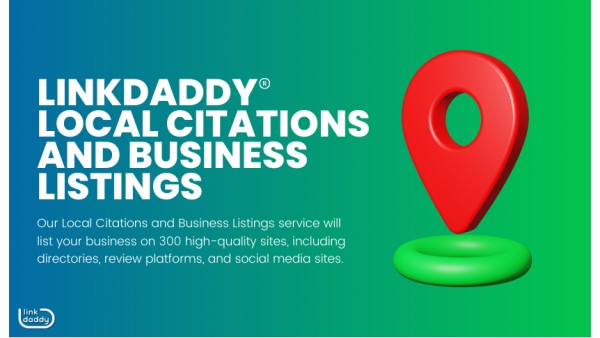Understanding the Various Kinds of Cloud Services and Their Usages
In today's electronic landscape, the realm of cloud computing uses a varied selection of solutions that accommodate the needs of companies and individuals alike. From Framework as a Service (IaaS) to Software Program as a Solution (SaaS), each kind of cloud solution serves a special function and offers distinctive advantages. Comprehending the distinctions between these various cloud designs is crucial for maximizing procedures, boosting scalability, and making sure cost-efficiency in a significantly interconnected world. By checking out the nuanced capabilities and applications of each cloud solution, one can navigate the complexities of cloud computing with precision and insight.
Infrastructure as a Service (IaaS)
Infrastructure as a Service (IaaS) provides customers with virtualized computing sources over the internet on a pay-as-you-go basis. This cloud computing model delivers necessary IT infrastructure such as digital machines, storage, and networking without the requirement for organizations to invest in and handle physical web servers and information centers. With IaaS, individuals can scale resources up or down based upon their demands, providing flexibility and cost-efficiency.
Among the crucial benefits of IaaS is its capacity to swiftly arrangement and deploy infrastructure elements, making it possible for companies to respond quickly to transforming demands and market conditions. By contracting out infrastructure monitoring to the provider, companies can focus more on their core service activities instead than handling the complexities of equipment maintenance and upgrades.
In addition, IaaS uses a high level of integrity and protection, with carriers normally providing durable information backup, catastrophe healing, and cybersecurity measures. This assists guarantee that crucial organization operations remain nonstop and data stays protected against potential threats. cloud services press release. Generally, Infrastructure as a Solution improves IT operations, improves scalability, and decreases capital investment for companies of all dimensions
Platform as a Solution (PaaS)
Building upon the foundation of Framework as a Service (IaaS), System as a Solution (PaaS) supplies a comprehensive environment for designers to create, deploy, and manage applications without the complexities of underlying infrastructure management. PaaS provides a platform with devices and solutions that simplify the advancement procedure, enabling designers to focus on composing code and building applications as opposed to dealing with infrastructure problems.

Software Program as a Service (SaaS)
Software as a Service (SaaS) revolutionizes the means businesses accessibility and use software applications by supplying them on a subscription basis via cloud providers. This cloud computing version eliminates the requirement for companies to maintain and set up software program on private tools, as everything is held and taken care of centrally in the cloud.
SaaS offers a cost-effective service for organizations as they only pay for the software application they use without the added costs of equipment upkeep or software updates. It likewise uses scalability, permitting companies to conveniently adjust their software application needs based upon their needs.
Additionally, SaaS applications can be accessed from any Continue kind of device with a web link, advertising partnership and adaptability amongst remote teams. Protection is a top priority in SaaS, with suppliers implementing robust actions to protect data saved in the cloud.
Popular instances of SaaS include client partnership management (CRM) software program like Salesforce, performance tools like Microsoft Office 365, and cooperation systems like Google Workspace. SaaS proceeds to get grip in business globe due to its convenience, cost-efficiency, and scalability.
Feature as a Solution (FaaS)
With the development of cloud services like Software as a Solution (SaaS) simplifying software shipment, Feature as a Solution (FaaS) represents a standard change in exactly how code is performed in a serverless environment. FaaS allows programmers to compose and perform individual features or pieces of code in response to details events without the need to take care of the facilities. This serverless computing version allows developers to concentrate exclusively on composing code to execute specific functionalities, without worrying themselves with the underlying framework or server management.
Among the crucial advantages of FaaS is its ability to range immediately based on the inbound work. Features are implemented in stateless containers that are rotated up and down as required, making sure optimal source application and cost-effectiveness. FaaS is specifically beneficial for event-driven and microservices styles, where code execution is triggered by events such as HTTP demands or database updates. By abstracting the framework layer, FaaS simplifies development, increases time to market, and improves total dexterity in deploying cloud-native applications.
Storage as a Solution (STaaS)
A fundamental element in cloud computer, Storage as a Service (STaaS) gives users with a scalable and reliable service for handling information storage demands. STaaS enables companies to store and fetch information from remote web servers through the web, removing the need for on-premises hardware. This solution offers flexibility by allowing customers to pay only for the storage they utilize, making it an affordable remedy for businesses of all sizes.

STaaS is especially helpful for services with varying storage needs, as it supplies a secure and dependable storage space option without the requirement for significant ahead of time investments. By leveraging STaaS, companies can enhance their information administration processes, enhance ease of access, and boost data safety and security in a cost-effective manner.

Conclusion
In final thought, recognizing the various kinds of cloud services and their uses is vital for people and services looking to utilize the advantages of cloud computer. By utilizing the best cloud service, organizations can improve their effectiveness, scalability, and adaptability in managing their IT infrastructure and applications.
From Infrastructure as a Service (IaaS) to Software as a Service (SaaS), each type of cloud service serves an unique purpose and supplies unique advantages. linkdaddy cloud services. By discovering the nuanced capabilities and applications of each cloud solution, one can navigate the complexities of cloud computing with precision and foresight
With the evolution of cloud solutions like Software program as a Solution (SaaS) enhancing software application delivery, Feature as a Solution (FaaS) stands for a standard shift in how blog here code is performed in a serverless environment.In conclusion, recognizing the various types of cloud services and their uses is essential for organizations and people looking to utilize the advantages of cloud computing. By making use of the appropriate cloud solution, organizations can enhance their performance, scalability, and adaptability in managing their IT framework and applications.
 Dylan and Cole Sprouse Then & Now!
Dylan and Cole Sprouse Then & Now! Michael J. Fox Then & Now!
Michael J. Fox Then & Now! Melissa Joan Hart Then & Now!
Melissa Joan Hart Then & Now! Nancy McKeon Then & Now!
Nancy McKeon Then & Now! Barbara Eden Then & Now!
Barbara Eden Then & Now!